Enemies of the State
The American Ways Series

General Editor: John David Smith,
Charles H. Stone Distinguished Professor of American History
University of North Carolina at Charlotte
From the long arcs of Americas history, to the short timeframes that convey larger stories, American Ways provides concise, accessible topical histories informed by the latest scholarship and written by scholars who are both leading experts in their fields and polished writers.
Books in the series provide general readers and students with compelling introductions to Americas social, cultural, political, and economic history, underscoring questions of class, gender, racial, and sectional diversity and inclusivity. The titles suggest the multiple ways that the past informs the present and shapes the future in often unforeseen ways.
Current Titles in the Series
How America Eats: A Social History of U.S. Food and Culture , by Jennifer Jensen Wallach
Popular Justice: A History of Lynching in America , by Manfred Berg
Bounds of their Habitation: Race and Religion in American History , by Paul Harvey
National Pastime: U.S. History through Baseball , by Martin C. Babicz and Thomas W. Zeiler
This Green and Growing Land: Environmental Activism in American History , by Kevin C. Armitage
Wartime America: The World War II Home Front, Second Edition , by John W. Jeffries
Enemies of the State: The Radical Right from FDR to Trump , by D. J. Mulloy
Enemies of the State
The Radical Right in America from FDR to Trump
D. J. Mulloy

ROWMAN & LITTLEFIELD
Lanham Boulder New York London
Published by Rowman & Littlefield
A wholly owned subsidiary of The Rowman & Littlefield Publishing Group, Inc.
4501 Forbes Boulevard, Suite 200, Lanham, Maryland 20706
www.rowman.com
Unit A, Whitacre Mews, 26-34 Stannary Street, London SE11 4AB
Copyright 2018 by The Rowman & Littlefield Publishing Group, Inc.
All rights reserved . No part of this book may be reproduced in any form or by any electronic or mechanical means, including information storage and retrieval systems, without written permission from the publisher, except by a reviewer who may quote passages in a review.
British Library Cataloguing in Publication Information Available
Library of Congress Cataloging-in-Publication Data Available
ISBN: 978-1-4422-7651-2 (cloth : alk. paper)
ISBN: 978-1-4422-7652-9 (electronic)
 The paper used in this publication meets the minimum requirements of American National Standard for Information SciencesPermanence of Paper for Printed Library Materials, ANSI/NISO Z39.48-1992.
The paper used in this publication meets the minimum requirements of American National Standard for Information SciencesPermanence of Paper for Printed Library Materials, ANSI/NISO Z39.48-1992.
Printed in the United States of America
Its rough out there / High water everywhere...
Bob Dylan, High Water (For Charley Patton)
For my students and for my teachers.
Acknowledgments
this book originated in a conversation at the annual meeting of the Organization of American Historians in a rain-swept Rhode Island in April 2016. My sincere thanks to the American history editor at Rowman & Littlefield, Jon Sisk, and to the general editor of the American Way series, John David Smith, for that conversation and for their unstinting support and enthusiasm for this project. I would also like to thank assistant editor Kate Powers for her considerable assistance in seeing the book through to publication and everyone else at Rowman & Littlefield, especially associate editor Hannah Fisher, who made it possible. Adam Crerar, David Monod, and Peter Woolstencroft took time out of their busy schedules to cast their expert eyes over the manuscript, for which I am very appreciative. A list of the authors whose work I consulted in writing the book can be found in A Note on Sources at the books end. I thank them all. History is an always ongoing discussion about the past, and I am deeply grateful to be able to contribute to it. My parents have remained steadfast in their support for more than forty years now. I do not take that for granted. Finally, I would like to thank my wonderful wife, the novelist Pamela Mulloy, and my amazing daughter, Esme, a budding social historian, for allowing me to escape so regularly to my office in the attic over the past few months and for not complaining too much about the strange music so often emanating from there.
Introduction
how did we get here , many people are currently asking themselveswith a billionaire political outsider in the White House and a broader climate in which a fervent hostility to government, especially the federal government, seems to provide the very raison dtre for much of the politics taking place across the country? This book argues that to make sense of these contemporary developments we need to understand the longer history of the radical right in the United Statesin all its many and varied formsgoing back at least to the days of the Great Depression, the New Deal, and the extraordinary political achievements of Franklin D. Roosevelt. The book therefore provides a concise history of the American radical right from the 1930s through to the surprise election of Donald Trump in 2016 and his first year in office.
It examines a wide range of fascinatingand frequently controversialgroups and figures, including the American Liberty League, Huey Long, Father Charles Coughlin, Joe McCarthy, J. Edgar Hoover, the John Birch Society, Citizens Councils, George Wallace, Barry Goldwater, Richard Nixon, Ronald Reagan, Phyllis Schlafly, Pat Robertson, militia groups, and the Tea Party. But it also considers the key role that big business and the extremely rich have played in supporting the radical right throughout this period, as well as the close, if sometimes fractious, relationship that has existed between members of the radical right and the Republican Party. In doing so, I make the case that the history of the radical right cannot and should not be seen in isolation from broader historical trends and developments. Hence, among the significant events and issues covered in the pages that follow are the great debate over Americas entry into the Second World War, the Cold War, southern resistance to the civil rights movement, the rise of the religious right, the Great Recession of 2008, and the election of Barack Obama as the nations first African American president.
What exactly do I mean by the term radical right? Its origins can be traced back to the 1950s, to the attempt to account for the apparent lapse in the American political system represented by McCarthyism. In 1955 a group of prominent academics published a series of essays on the phenomenon called The New American Right . Included among them were Seymour Martin Lipsets The Sources of the Radical Right and Richard Hofstadters The Pseudo-Conservative Revolt. It was these two essayssupplemented by another Hofstadter essay called The Paranoid Style in American Politics, in 1964that did much to both define the radical right and establish its chief characteristics. The fundamental difference between moderate conservatives and pseudo-conservatives, these Columbia University professors argued, was that the former were usually willing to negotiate and compromise in order to achieve their political goals. They believed in constitutional processes, civil liberties, and due process, and generally accepted the past within limits. Whereas the latterthose on the radical rightwanted to turn the clock back and had a tendency toward political extremism, conspiracy theories, paranoia, and a dense and massive irrationality.
Next page
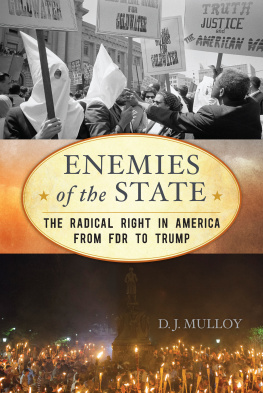


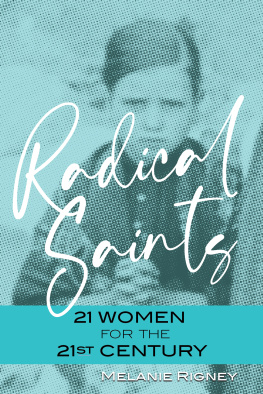
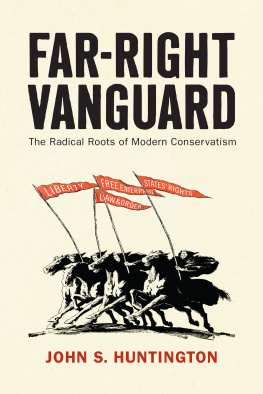
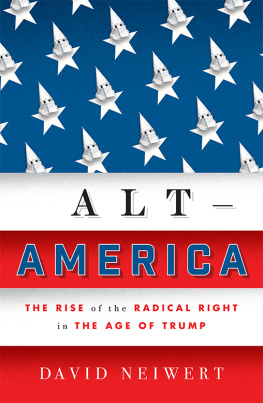
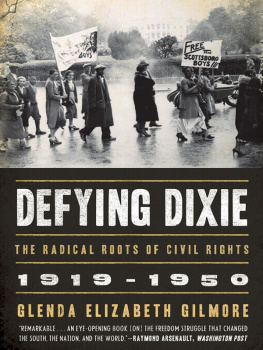

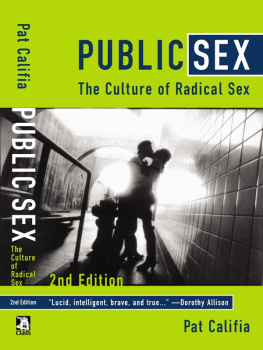
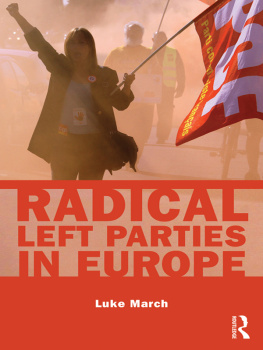

 The paper used in this publication meets the minimum requirements of American National Standard for Information SciencesPermanence of Paper for Printed Library Materials, ANSI/NISO Z39.48-1992.
The paper used in this publication meets the minimum requirements of American National Standard for Information SciencesPermanence of Paper for Printed Library Materials, ANSI/NISO Z39.48-1992.